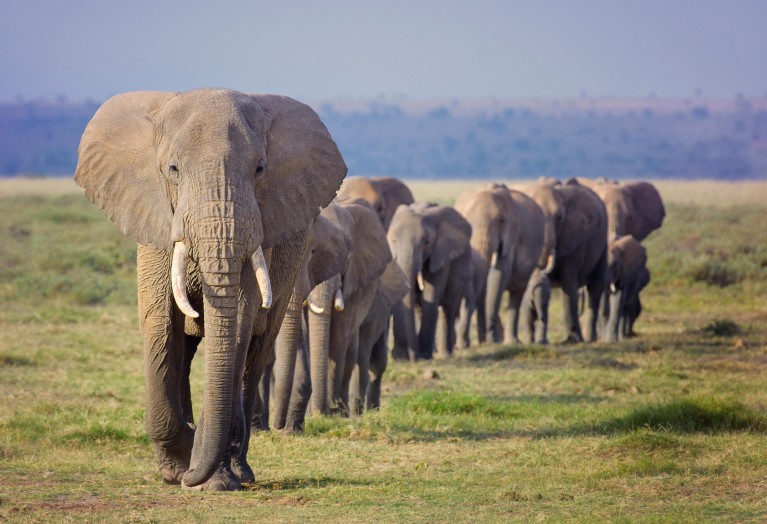
Line of Elephant family marching toward a water hole in Amboseli, Kenya.CREDIT: Vicki Jauron, Babylon and Beyond Photography/ Moment/ Getty Images
Integrating data on habitat suitability with population genetics improves the ability to map elephant movements, a study1 by researchers from the University of Pretoria, South Africa, and the University of Illinois Urban-Champaign has shown.
Management of African elephants has long been a contentious issue. Fences built around protected areas have effectively closed important corridors and fragmented elephant habitats. National borders, human settlements, and urban infrastructure also pose additional barriers to corridors that connect elephants to other populations and habitats across their vast home ranges.
The resulting isolation leaves herds vulnerable to habitat destruction and other environmental changes. These populations also risk genetic isolation, increasing their susceptibility to disease.
The large-scale study was conducted across six countries in southern Africa. “Our goal was to provide results for conservation managers wanting to establish initiatives across broad geographic regions. The results are more informative when gene flow is considered in addition to spatial data,” says lead author Alida de Flamingh.
The research team developed a landscape connections map using genetic data derived from faecal samples and an extensive database of elephant telemetry to identify critical areas for maintaining connectivity among savannah populations.
The study also reflects how unsuitable habitats steer elephant movements. “There is a set of parameters that dictate what elephants are looking for in a landscape,” adds co-author, Nathan Alexander. He explains that any limiting factor, such as high human density or low vegetation, can define unsuitable areas.
“Southern Africa is a stronghold of [elephant] genetic diversity. One aspect of this study was to make sure that these strongholds of genetic diversity remain,” adds de Flamingh.
